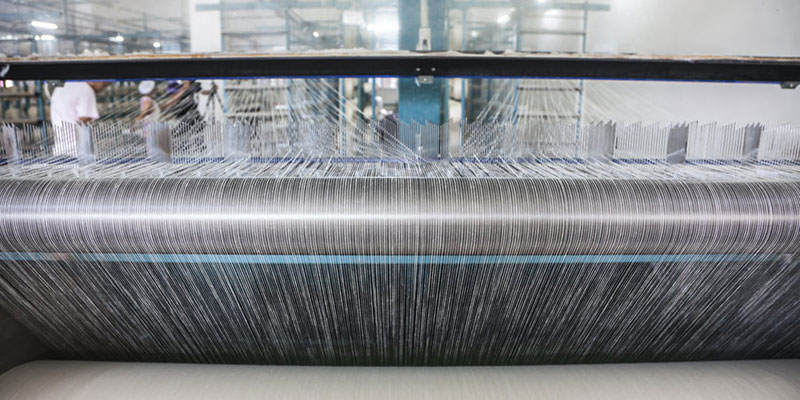Calculating a product’s water footprint is complex. For instance, yarn’s water footprint takes into account not only water used to treat fibers, but water that goes into growing cotton or raising sheep for wool.
When you think of the water that goes into everyday items and processes, don’t forget hidden sources
A water footprint is, quite simply, a measure of how much water is used to produce a good or service. Processes, products, companies, sectors, and regions also have water footprints, and calculating them is a painstaking process that demands consideration of the water used at every link in the value chain.
Measuring water footprints is becoming ever more important as governments, the private sector, and the public seek ways to use freshwater resources more wisely. Fortunately, many new strategies and technologies have emerged to help shrink water usage.
Water Footprints and Virtual Water
Water footprints calculate both direct water use and indirect, virtual water use. Virtual water conceptualizes the water required indirectly to produce a good. For instance, the water footprint of a woolen sweater includes water from the moment rain enters the ground to nourish the feed crops that sustain sheep. It also takes into account the water used to wash, process, dye, and transform the wool into fabric.
Pollutants enter the water that is used along the way, and the amount of water required to dilute the polluted water is also included.
It may take 500,000 liters of water or more to manufacture a metric ton of wool. While the sweater we buy ultimately doesn’t contain water itself, its water footprint contains all of the water that went into its production embedded in it as virtual water.
Green, Blue, and Grey Water
A water footprint takes into consideration three types of water sources: green, blue, and grey water.
- Rain is considered green water when it is stored in soil and root zones or temporarily remains on fields or on crops after it falls.
- Blue water is fresh surface water and groundwater from lakes, rivers, and aquifers.
- Although grey water can refer to wastewater from sinks, showers, and bathtubs in one context, the term has a distinct meaning in terms of water footprints. It’s the water required to dilute polluted water to match natural environmental background concentrations and exceed water quality standards.
These three categories can be augmented with water from nontraditional sources that have been treated with a variety of technologies.
Lowering Water Footprints
Nontraditional water sources like seawater and brackish surface or groundwater can augment blue water resources via desalination. Long considered too expensive for many scenarios, recent innovations have lowered price points to dramatically. Fluence’s modular NIROBOX™ units are active in this market space.
Water reuse can shrink blue water footprints by providing high-quality water for nonpotable applications, including as agricultural irrigation, toilet flushing, and some industrial processes.
Fluence’s modular Aspiral™ plants provide biological treatment with membrane aerated biofilm reactor (MABR) technology to meet the highest agricultural reuse standards, including California’s Title 22 and China’s Class 1A. The MABR technology of Aspiral also dramatically shrinks energy and carbon footprints. And Fluence’s Nitro units use shortcut nitrogen removal to handle even high-strength sidestreams from anaerobic digestion energy recovery operations.
With proven technologies and three decades of experience, Fluence is prepared to help you achieve your water goals. Contact our water experts today.

